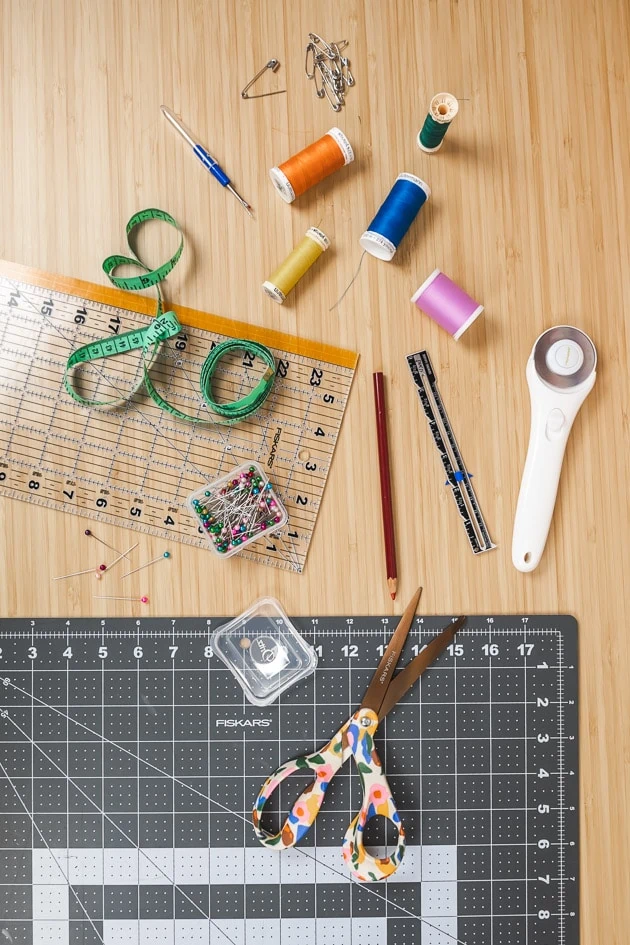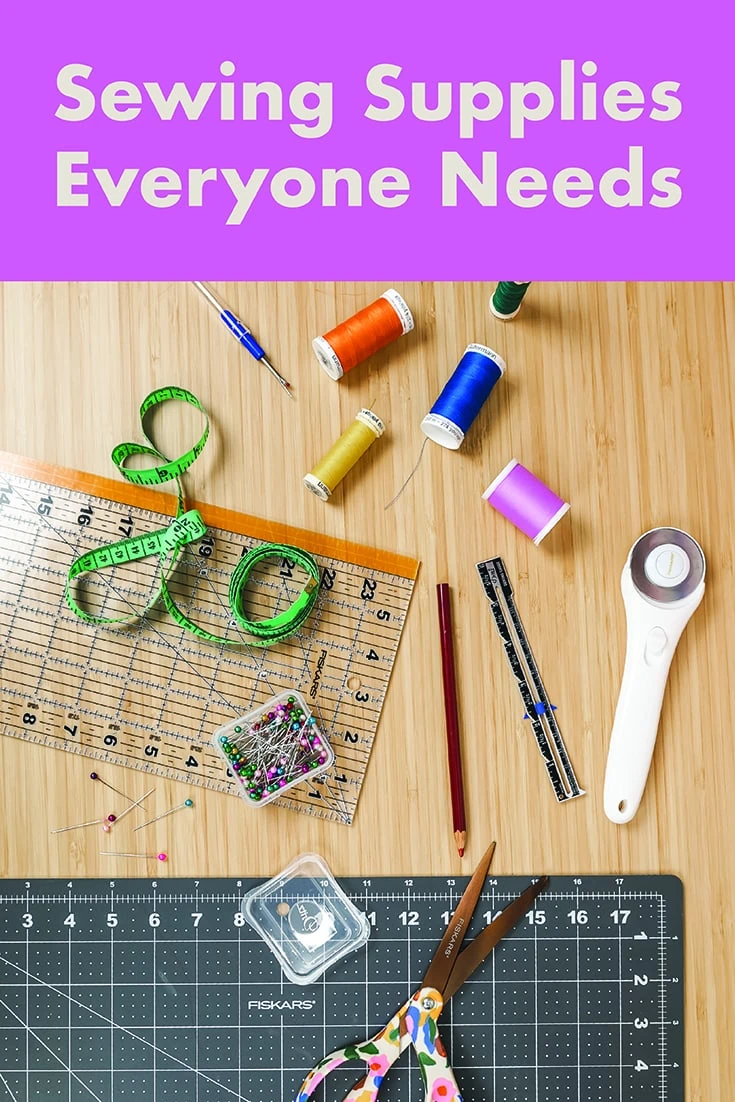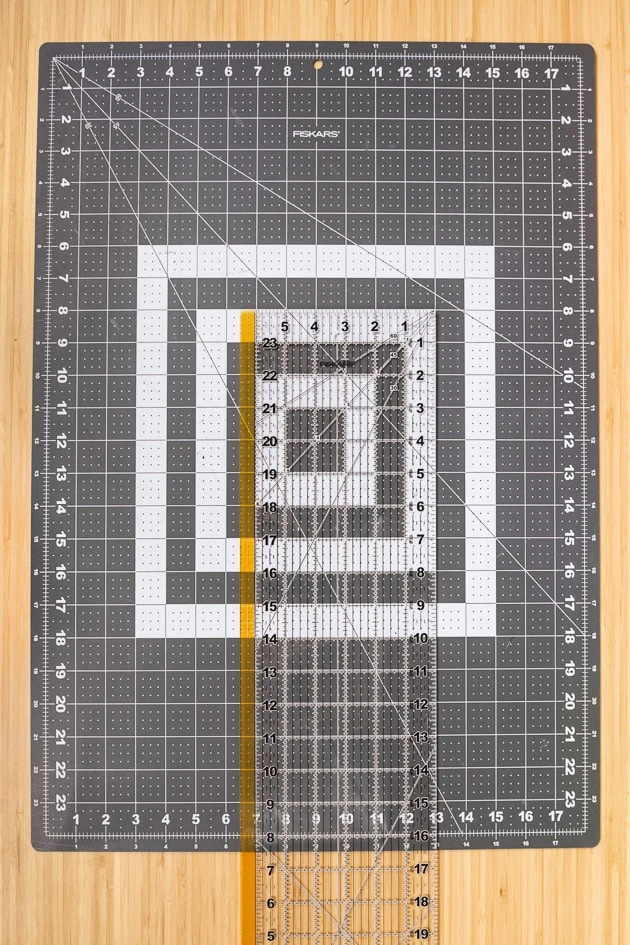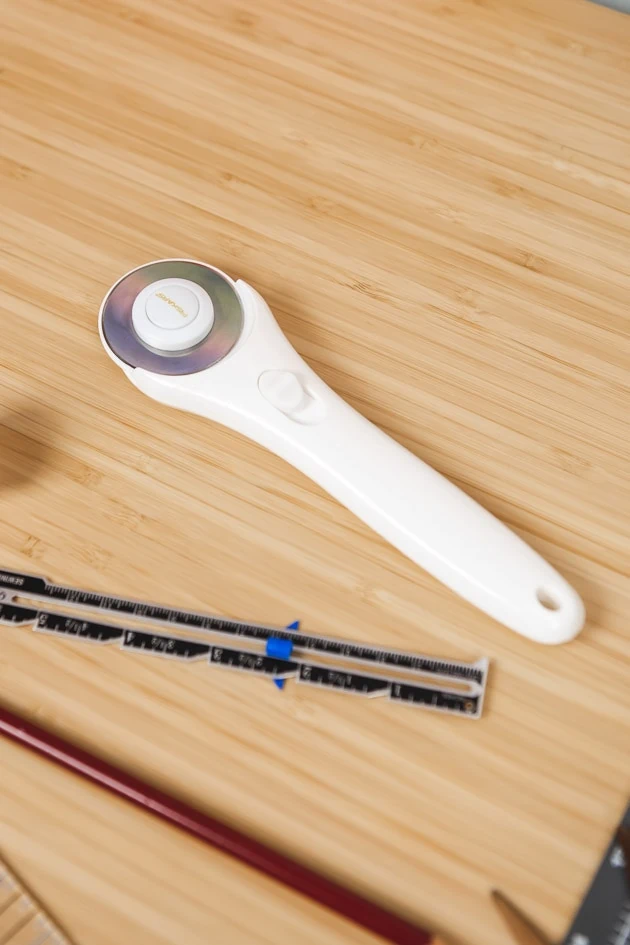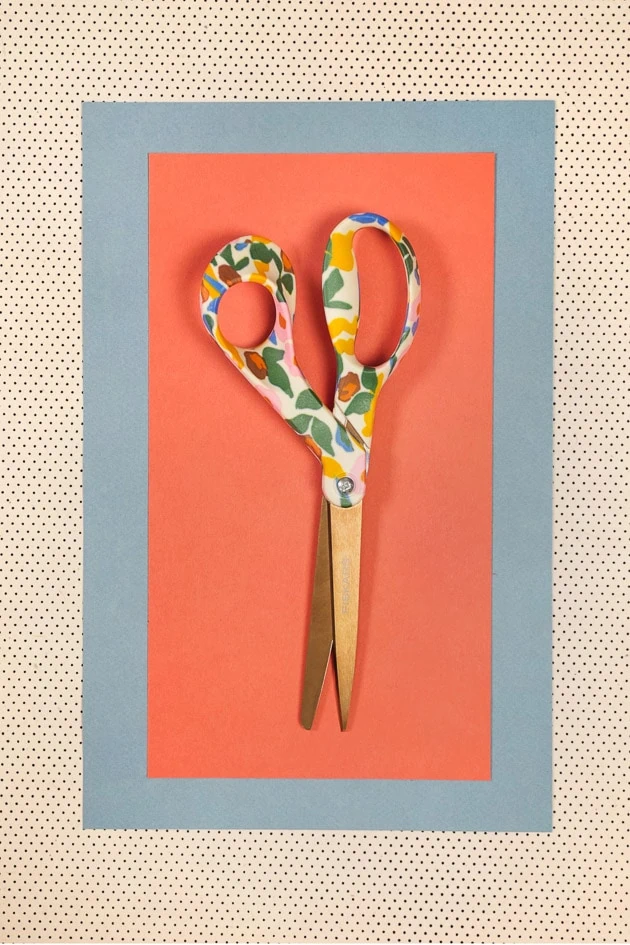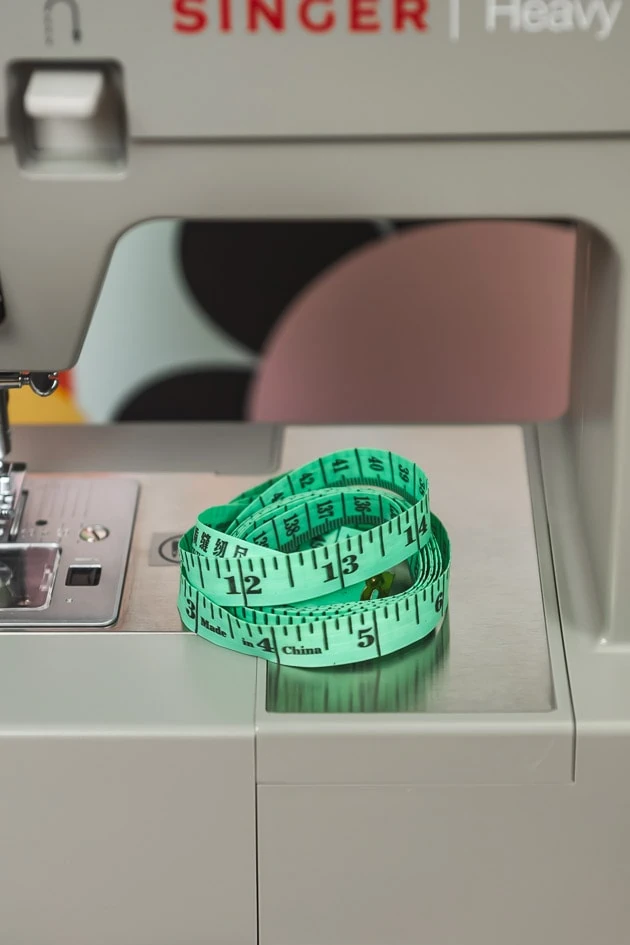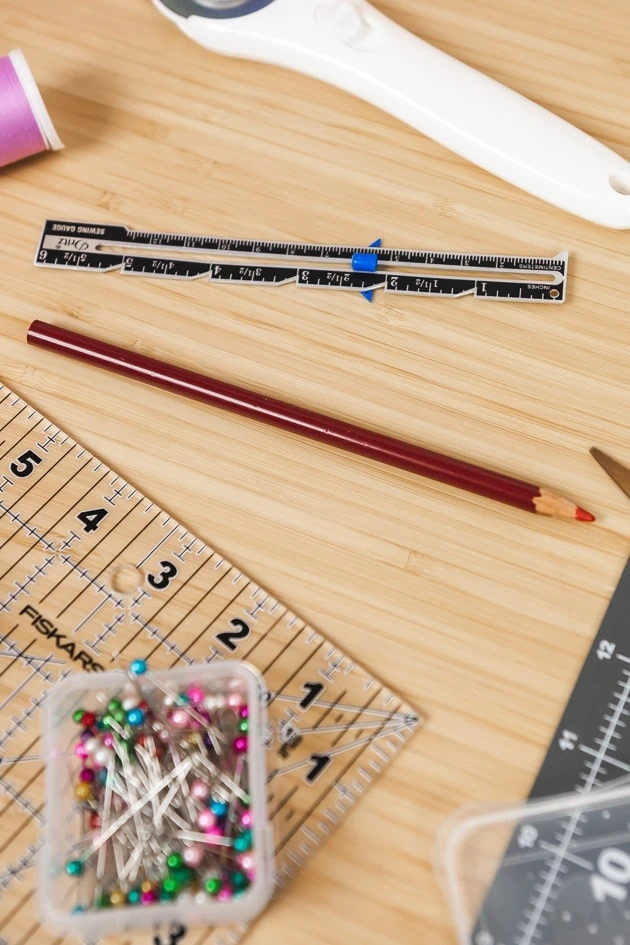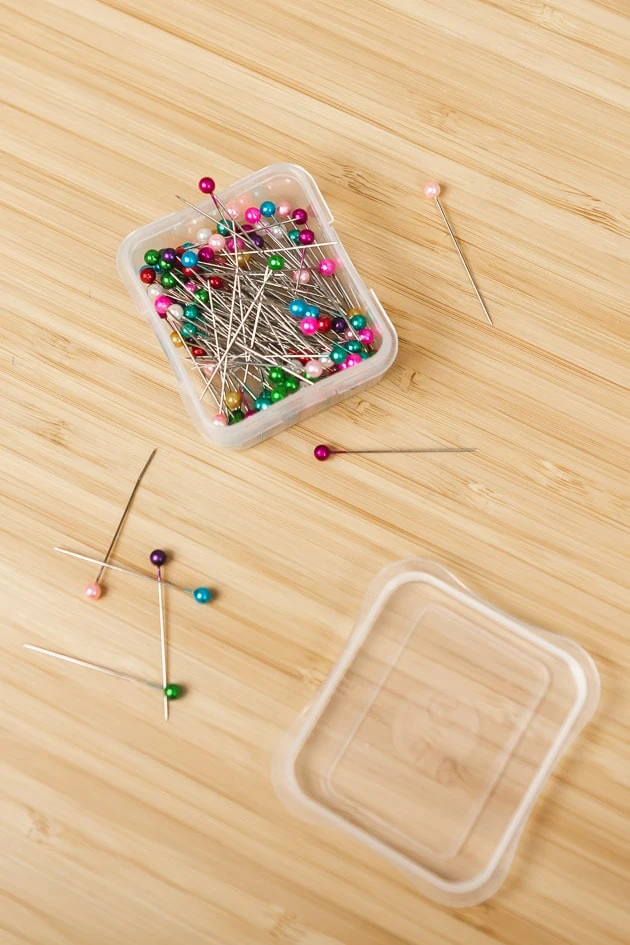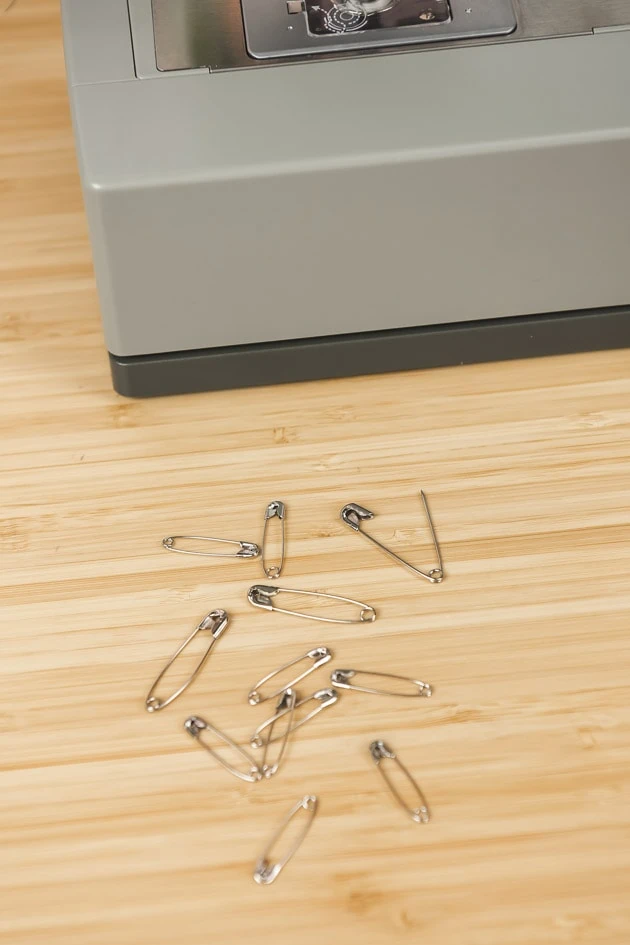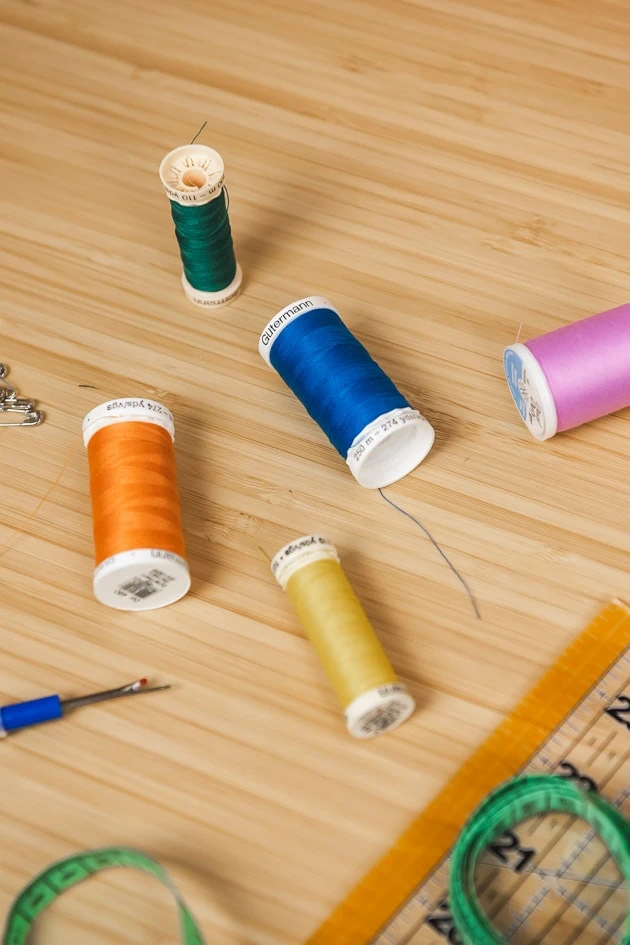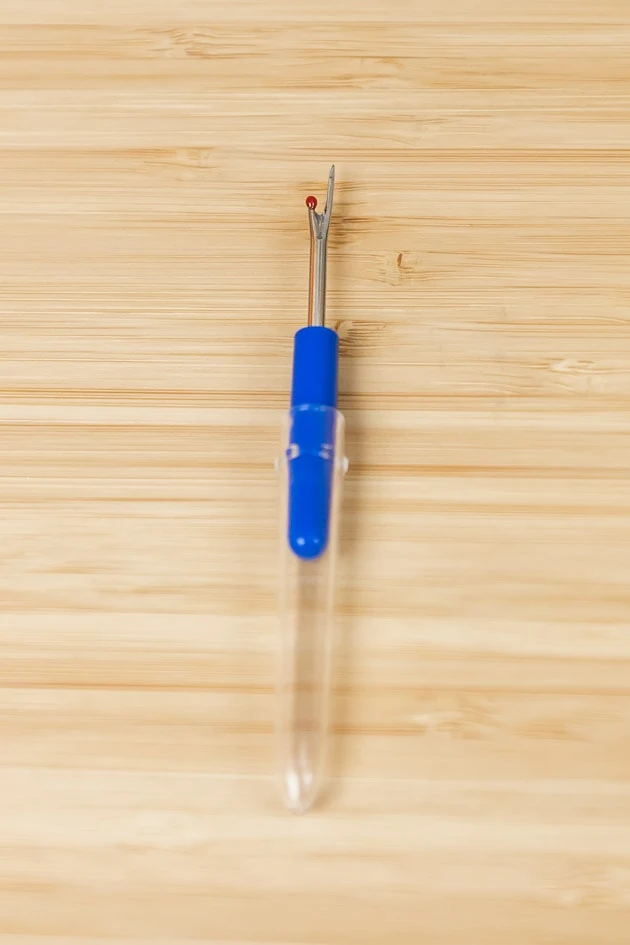Hello, and welcome to another week of our sewing basics series! This week we’ll be teaching you about the essential sewing supplies everyone should have.
We know that many of you are already familiar with the sewing basics, but we also know that many of you have a lot you would like to learn. In order to bring everyone up to speed, we’ve decided to help you out with some essential sewing skills that will help you succeed at a wide variety of basic sewing projects.
This Sewing Basics series is designed to give you the basic skills you need to get sewing! It’s for sewing projects you’ve wanted to make but have been a bit intimidated by until now. For those who’ve already learned the basics at some point, it’s a great refresher. For those who are completely new to sewing, it’s the perfect place to start.
For past Sewing Basics posts, click here.
Materials:
This post contains affiliate links. Any time you buy something from our affiliate links, we get a small commission at no cost to you!
Essential Sewing Supplies
The sewing supplies we’re talking about today are the essentials. They’re the ones I absolutely can’t live without! I use them religiously for probably 99% of my sewing projects. So if you’re lacking some basic sewing supplies but aren’t sure what’s really necessary, read on. I wish I had known about all of these sewing supplies when I first started sewing!
Note: our focus today is on the little things people might miss but that are incredibly useful. That being said, the big things are important, too! If you don’t already have a sewing machine, iron, and ironing board, invest in them, because you’ll use them for every sewing project.
Cutting Mat
This is a sewing supply I haven’t always had, but it will make cutting your fabric much easier and more precise, especially if you’re cutting squares or rectangles for things like quilts. It’s also great for altering hemlines of clothes! I use my cutting mat all the time–please, make your life easier and get yourself a good cutting mat.
Cutting mats come in many different sizes, but I’ve found that larger is better, if you have the space for it. Get one that will still fit on your table, but that’s big enough to lay out a large amount of fabric at once. My favorite cutting mat is this Fiskars one, but you can also go with this smaller version if you don’t have the space for the larger one. It’s self healing (a must), and gridded, which again, helps a lot when you need exact measurements.
Clear, Gridded Ruler
I am obsessed with my clear, gridded ruler and would definitely consider it an essential sewing supply! It’s basically replaced my yardstick. The benefits of a clear, gridded ruler? First, it’s clear, so you can easily see the fabric you’re trying to cut underneath it. It makes lining things up much easier. Next, since it’s wider than your average yardstick or ruler, it helps hold the fabric down flat while you’re cutting it–that means extra precision.
Rotary Cutter
Another one of my favorite go-to essential sewing supplies is a rotary cutter. If you’re going to use a clear, gridded ruler, a rotary cutter is a must. It’s impossible to get the same precision from a regular pair of sewing scissors, no matter how neat you are at cutting. The benefit of a rotary cutter is that it allows you to cut perfect, straight lines quickly and efficiently, as long as you have a cutting mat and clear, gridded ruler.
Tip: if you’re planning to buy a cutting mat, clear gridded ruler, and rotary cutter, I’d highly recommend saving a bit of money and buying this cutting set. It comes with all three and is a better deal than buying all three separately.
Scissors
A good pair of sewing scissors is an essential sewing supply everyone needs. While a rotary cutter is excellent to have on hand for straight lines and precision, regular sewing scissors are good for everything else. Cut straight lines, curves, notches, and clip your threads with sewing scissors. These should never leave your side when you’re sewing.
Speaking of scissors, the Fiskars scissors we released back in May are now available on our shop! Fiskars is my favorite brand for sewing supplies, and scissors are their specialty. The bonus is that our custom Fiskars scissors happen to be pretty cute, too.
Flexible Measuring Tape
A good, flexible measuring tape is another essential sewing supply that you’ll use frequently. It’s especially necessary for taking measurements (those clothes need to fit right!), but it’s also useful for measuring a lot of other things. Since it’s so long, it’s great to have on hand for measuring things like drawstring cording, elastic, fabric and more.
Marking pencil/marker
Another one of our essential sewing supplies that’s definitely useful to have on hand is a marking pencil or marker. You can also use chalk, if you want. Whatever you choose, it needs to be water soluble! I wish I could have told inexperienced, teenage me this before I used a sharpie to mark the button placket on my white shirt. You don’t want to stain your new project! The benefit of using a marking pencil or marker that’s made for sewing is that it will probably be made with water soluble ink. That means when you wash it it will be gone. No permanent stains on your new shirt!
Seam Gauge
A seam gauge is another essential sewing supply you’ll be grateful for. This makes measuring hems and seam allowances much more precise and efficient. This one also has a handy point at one end for turning corners.
Pins, Safety Pins, and Needles
Regular straight pins are a very useful sewing supply to have on hand. They help pin things in place so you can cut and sew precisely without things slipping around! Safety pins are also nice for times when you need to pin something and then try it on–that way you don’t have to worry about jabbing yourself with a sharp point as you’re taking it on and off! Also, you’ll use safety pins for turning casings and narrow things right side out.
You’ll also want a variety of needles on hand–hand sewing needles are great, especially for details you don’t want to show, as well as buttons, mending, and hand-stitching things closed. You’ll also want some extra sewing machine needles (try as I might, I still manage to break my sewing machine needles more frequently than I’d like to admit). Luckily, most sewing machines come with a few extras.
Thread
For any sewing project, make sure you pick up some matching thread! You won’t be able to sew without it. My favorite brand is Gutermann–their thread is strong and they usually have great color options. But you can also go with Coats and Clark. It’s a bit cheaper, but still great quality and versatile.
Bobbins
It’s nice to have a decent amount of extra bobbins on hand. Your machine will come with a few, but if you’re like me and your projects are colorful, you’ll probably have bobbins of almost every color of the rainbow. It’s nice to not have to reuse the same four bobbins if you’re in that boat!
Seam Ripper
Last but definitely not least is a seam ripper. As much as I’d like to think I can make it through a whole project with no errors, that’s more of a dream than reality. I’ve messed up enough times to want my seam ripper close at hand for every sewing project. Plus, if buttonholes are involved, a seam ripper is part of the process.
I made a nice discovery recently–most sewing machines come with a basic little seam ripper. But you can also buy fancier ones with bigger handles that make them easier to hold.
More Inspiration
Did you love this post on essential sewing supplies? There’s more where that came from! Check out the rest of our Sewing Basics series here. You won’t want to miss this DIY Fanny Pack or these cute DIY pencil cases, either! Also, see our past sewing projects: New Team Outfits, Easter outfits, Casetify inspired projects, shaped throw pillows, Mother’s Day apron, quilted shower curtain, quilted face mask, rainbow buttons, reusable lunch sack, and DIY beeswax wraps.



